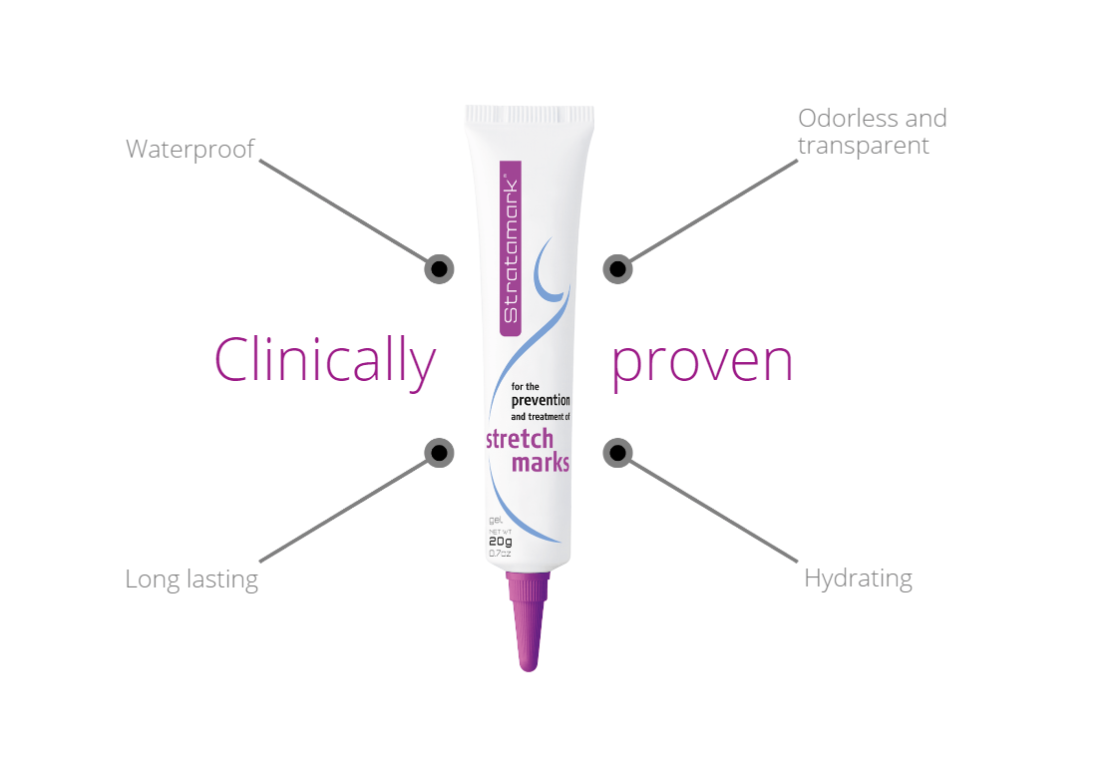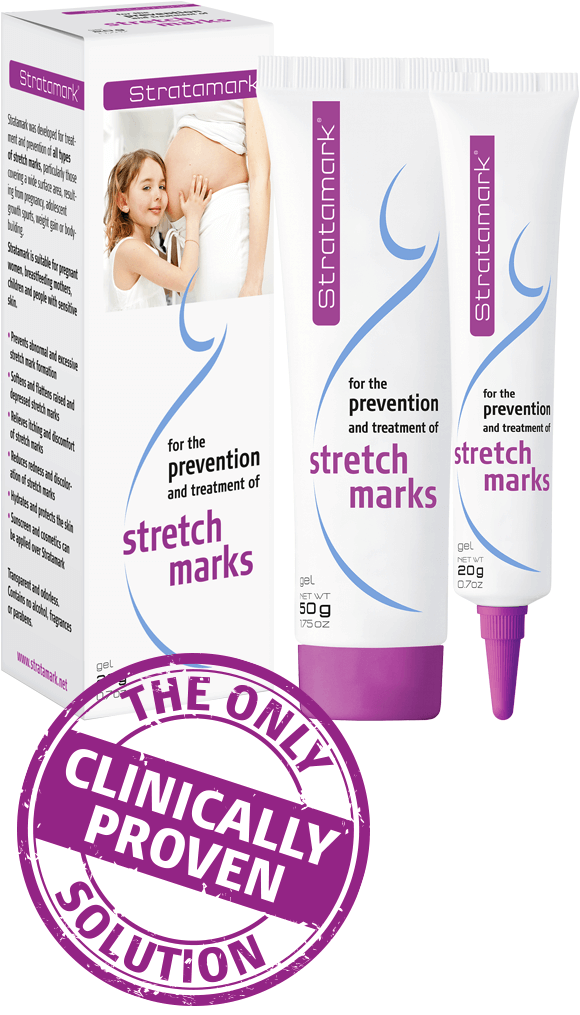Laser therapy is a great way to get rid of stretch marks fast. Using the Fraxel laser for stretch marks removal is undoubtedly one of the more popular and well-known options.
Your complete guide to Fraxel laser therapy discusses everything you need/may want to know about it.
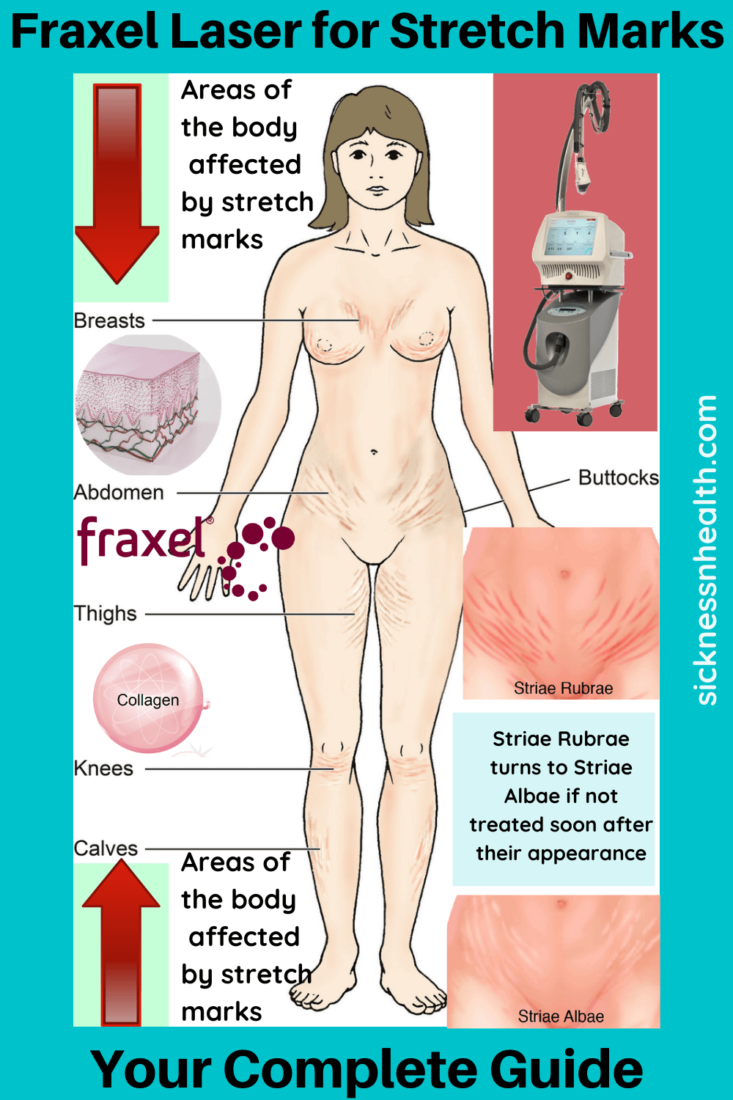
Page Contents
What Are Stretch Marks?
Stretch marks (aka striae or striae distensae) are line-shaped stripes that are created when the subcutaneous connective tissue is stretched and torn. So they are, as it were, subcutaneous damage and scars. Stretch marks are red, pink, blue, purple, or black in color depending on when they formed, and the skin hue of the person affected. The marks lighten over time and are common in both men and women.
The areas on the body where stretch marks are generally found include the stomach, buttocks, breasts, thighs, arms, and hips.
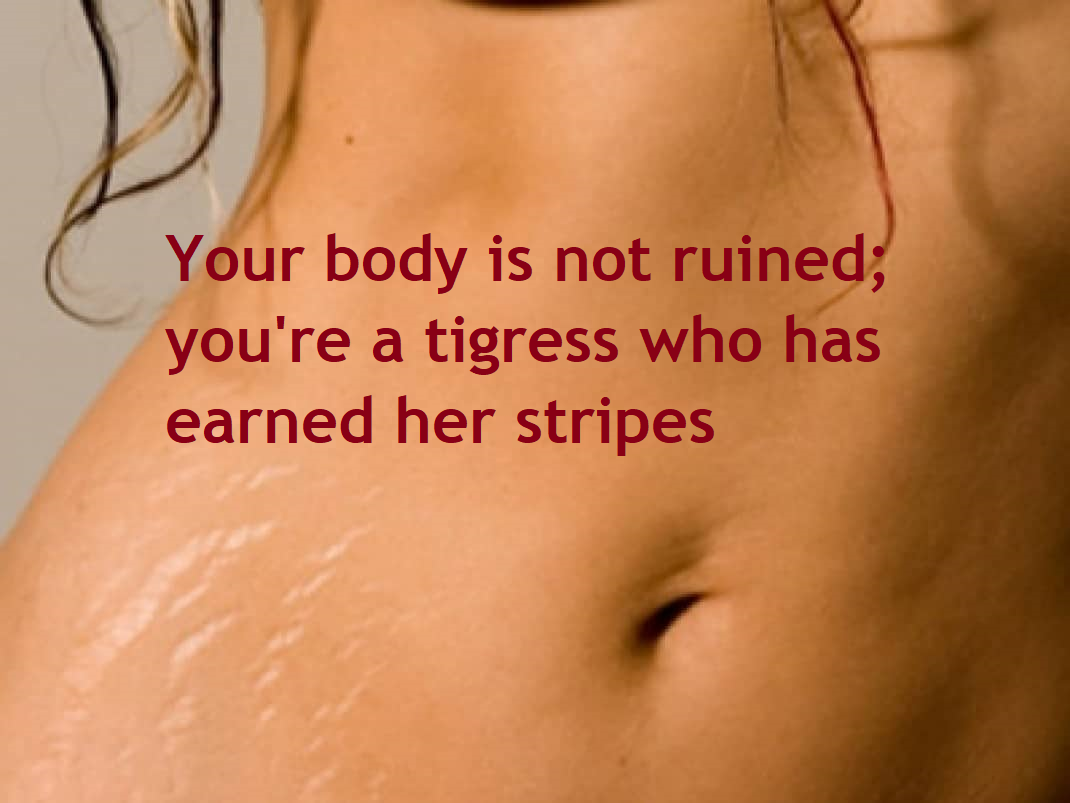
Different Types of Stretch Marks (Striae Distensae)
The classification of stretch marks is done in accordance with their formation and appearance. The two main classifications are:
Striae Rubrae: red stretch marks are new stretch marks (may also be pink or purple depending on the hue of the skin)
Striae Albae: Mature white/silvery depressed stretch marks
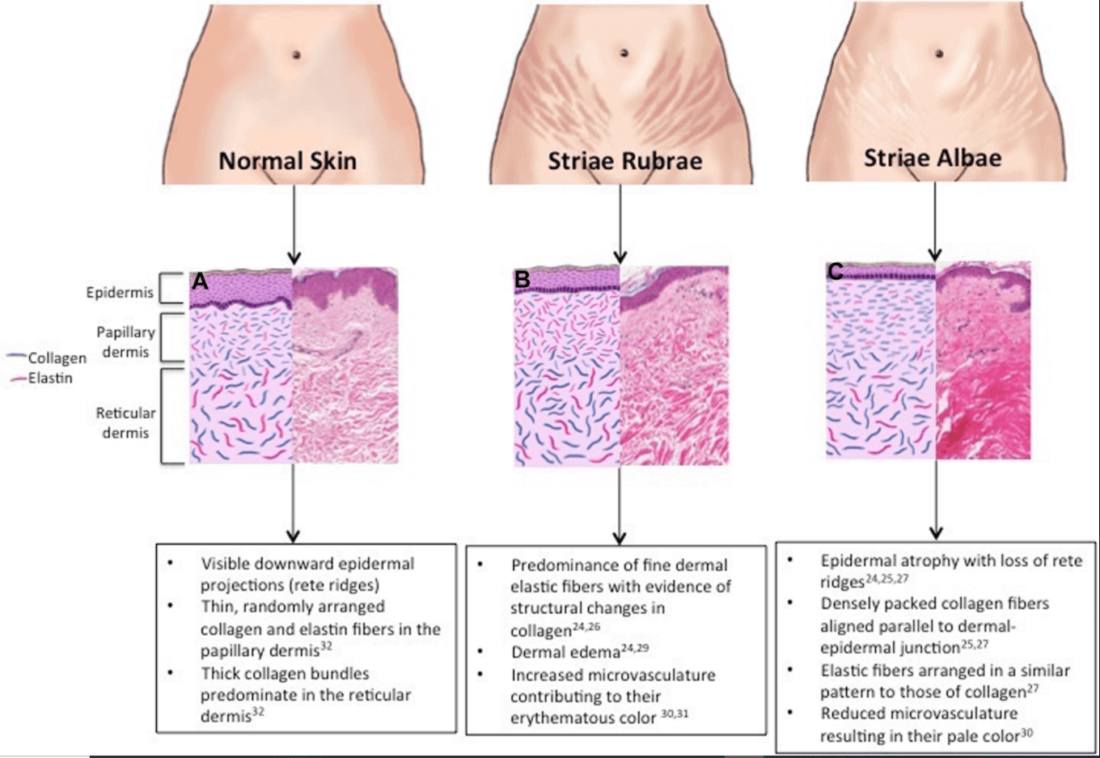
Other classifications include:
Striae Atrophicae of Adolescence: stretch marks appear on the back due to rapid growth during puberty
Striae Gravidarum: these stretch marks are caused by weight gain and expansion of the uterus during pregnancy
Striae Nigrae: In people with a dark complexion stretch marks appear darker i.e. dark grey or black
Striae Caerulae: Stretch marks appear dark blue or purplish in people with a dark complexion
Striae Atrophicans: “Striae atrophicans follow medical conditions, particularly Cushing syndrome/disease, and treatments, usually exogenous topical or systemic corticosteroids” Source
What Are The Causes of Stretch Marks?
Tearing is caused when the skin is subjected to rapid stretching brought on by a variety of factors:
Quick weight gain and muscle growth. Stretch marks are erroneously believed to be caused by weight loss too. Obese people are therefore more at risk.
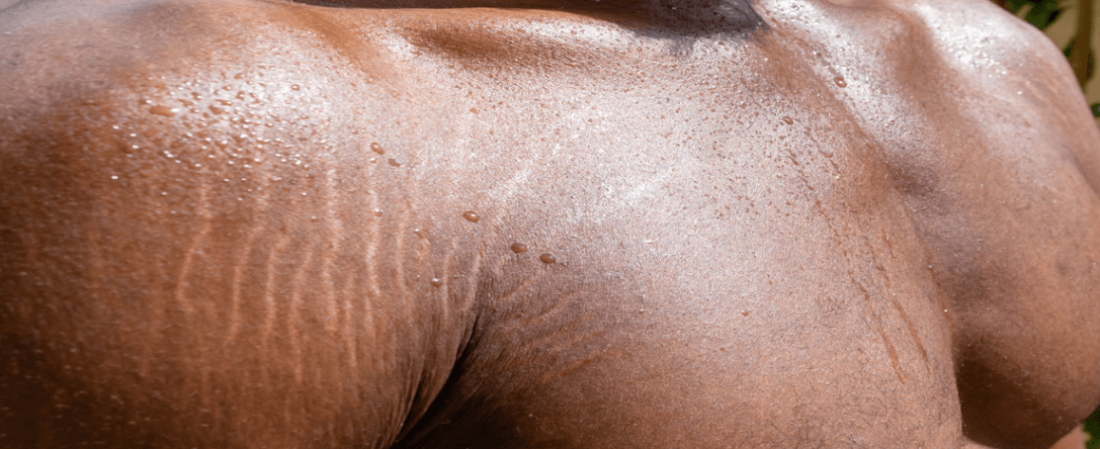
Young skin: The younger the skin, the greater the risk of stretch marks.
- It is estimated that 50-90% of pregnant women will have the misfortune of stretch marks developing during or after birth. If you want to know how to prevent stretch marks during pregnancy, read on. “In a new published European clinical trial, Stratamark demonstrated highly statistically significant results in the prevention of stretch marks in pregnant women, where only 18.2% of patients developed stretch marks instead of the consensus 65% – 70% of pregnant women.” The full medical information on Stratamark.
- Rapid growth during puberty may also cause stretch marks, especially on the back.
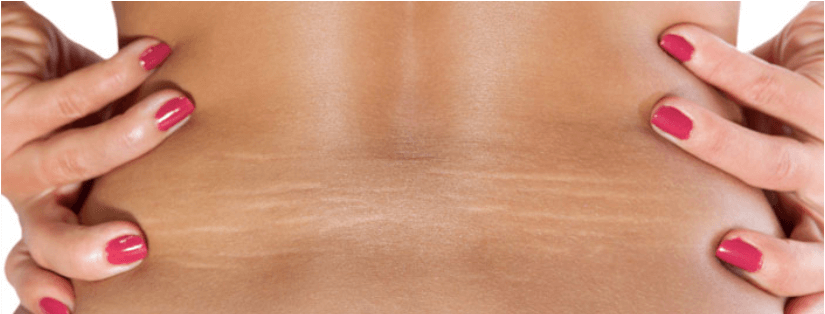
The development of stretch marks may be hereditary. If stretch marks run in the family, chances are you will get them also.
Corticosteroids. When lotions and creams containing cortisone are used over an extended period of time it may cause a decrease in the skin’s collagen levels. Your skin needs collagen to give it firmness and elasticity.
Breast augmentation surgery. Read more on how the measuring system used for implants can cause stretch marks and how to prevent this from happening before surgery.
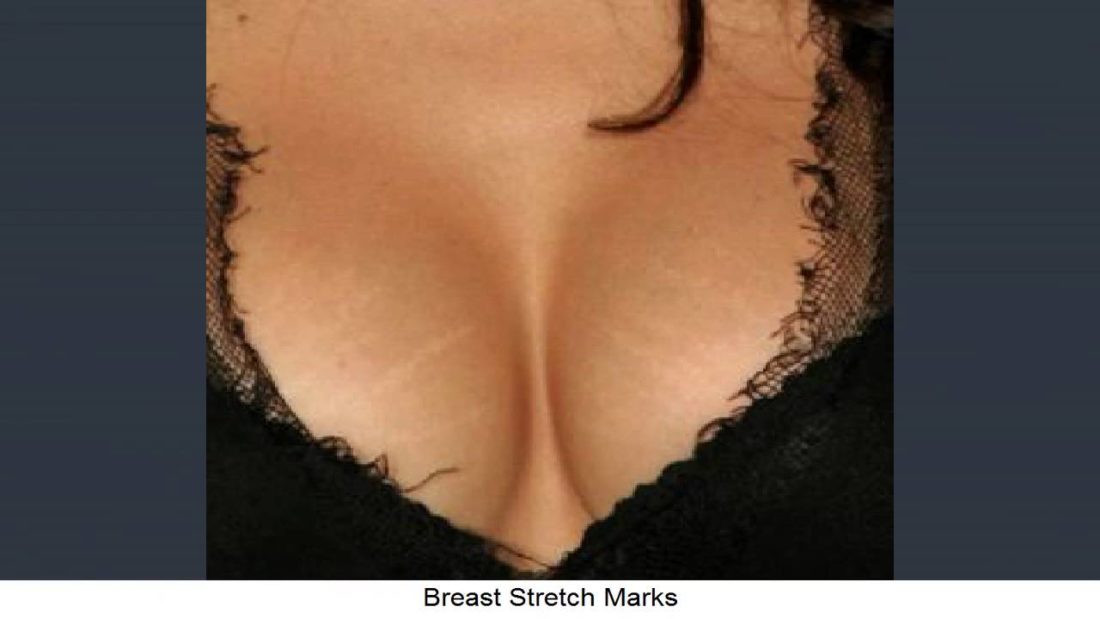
Genetic disorders can cause stretch marks. Examples are Marfan Syndrome, Ehlers-Danlos Syndrome (EDS), or Cushing’s syndromes.
If you’re a woman, you are more prone to stretch marks.
Ways to Remove Stretch Marks
While stretch marks aren’t painful, or even harmful to one’s health, they certainly are a thorn in the flesh of every person who has them.
The skin’s appearance can be a source of great security/insecurity for many women and men.
Since stretch marks are regarded as a cosmetic complaint, most health insurance companies will not pay for treatment.
Stretch marks usually become less noticeable as time passes, but it takes several months.
For those people who do not want to wait months for the marks to become less noticeable, there are some effective treatments for stretch marks that can improve the skin’s appearance.
There is no cure for stretch marks. White stretch marks may never completely disappear, unfortunately.
The methods most widely used for removing stretch marks include:
Fraxel Laser Therapy for Stretch Marks
How Does Laser Stretch Mark Removal Work?
The science of laser therapy, in short, is the stimulation of the skin in order to bring about new tissue growth.
This is accomplished when the ultraviolet light of the laser beams penetrates the skin at the dermis level where stretch marks originate. The laser beams stimulate the production of elastin and collagen (a protein-rich compound) which brings about the repair and rejuvenation of skin tissue.
Essentially damaged skin is removed, broken blood vessels are sealed and the fibers of the skin are repaired, thus “filling” the stretch marks.
Below are laser stretch mark removal before and after pictures:
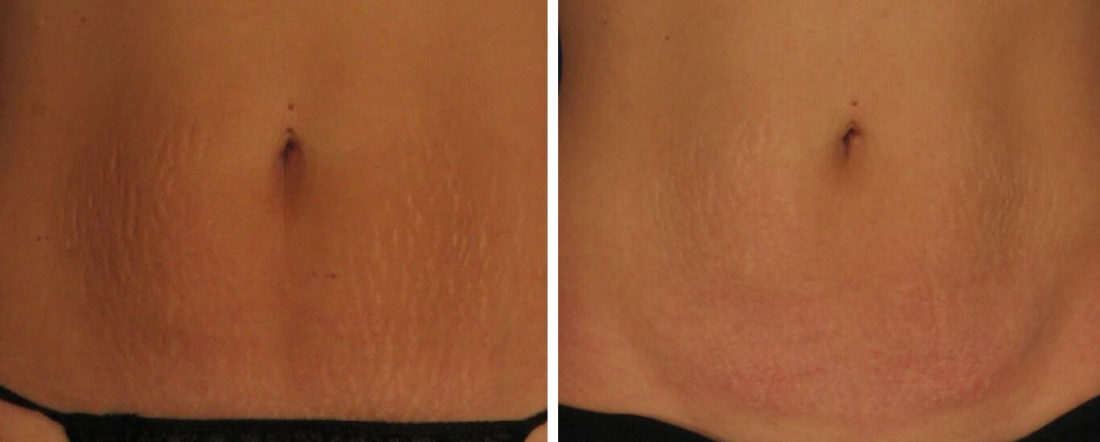
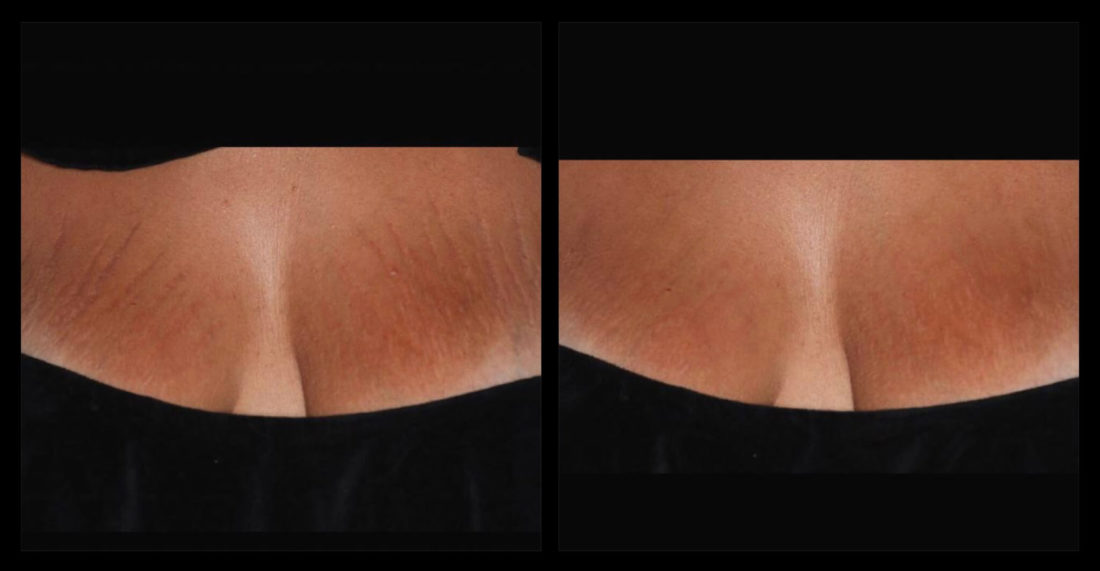
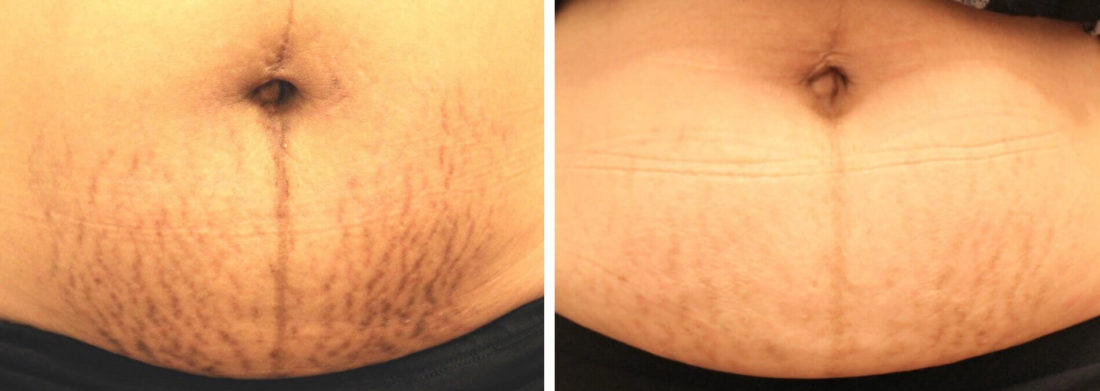
Laser treatment is widely considered the most effective stretch mark removal option.
Different types of stretch marks are treated using different types of laser beams.
An individual’s medical professional will determine the stage of the marks and based on the findings, the physician can advise on the laser treatment most advantageous in getting rid of stretch marks.
Types of lasers:
Fractional lasers:
Non-Ablative: Fraxel, Erbium glass, Pulsed Dye Laser, Excimer
Ablative: Erbium: YAG and CO2
Fraxel Laser for Stretch Marks
Fraxel is the brand name of the laser device that pioneered fractional resurfacing technology.
How the Fraxel Laser Procedure Works
Fraxel laser is best suited for reddish stretch marks, but may also work to get rid of white stretch marks.
With this method, the lower skin layers are treated in such a way that it starts to renew itself. New elastin and collagen are created and the skin becomes fuller and more resilient.
A topical local anesthetic can be applied to the skin about 15 minutes before treatment starts for people with a low pain threshold.
As the fractional resurfacing laser handpiece is moved over the target area, it destroys damaged skin cells and promotes the growth of newer, healthier cells. The treatment usually takes between 20 to 45 minutes, depending on the color, depth, location, and size of the stretch marks.
The laser can be used very precisely, so that specific spots on the skin can be tackled.
Applied to a small area of the skin at any one time, the laser head is placed on the skin, and pulses are delivered side by side until the entire area has been treated. You will feel a warm sensation and a stimulating feeling.
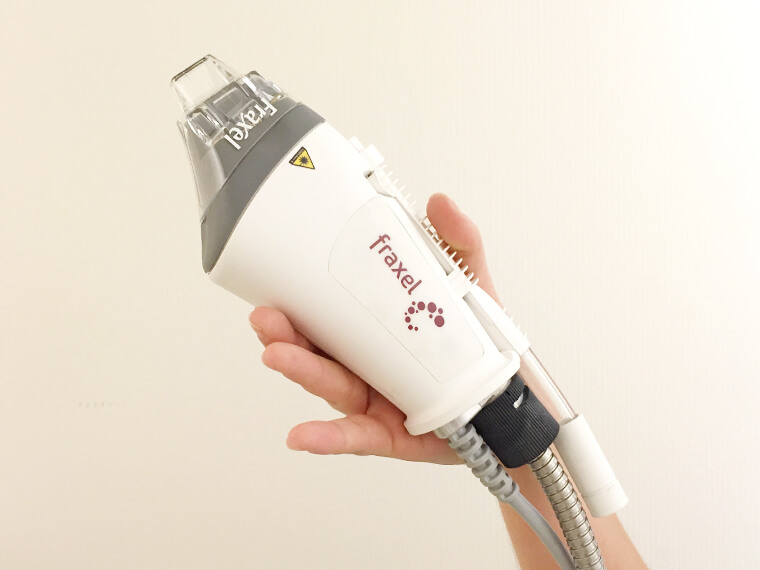
The laser beams make, as it were, tiny holes next to each other in the skin. These beams each heat both the dermis and epidermis allowing for deep and superficial treatment. Although the light from the fractional resurfacing laser reaches the inner layers of the skin it leaves the surrounding healthy skin unaffected. This allows for fast healing.
These heat bundles stimulate collagen and elastin production.
The skin around the tiny holes remains intact and in this way, the healthy tissue can help repair the damaged tissue at an accelerated rate.
There is a cooling system in the laser head, which makes the treatment tolerable. If necessary, after treatment the area can be cooled with a cold pack.
There may be some redness, swelling, and a burning sensation once the treatment is finished. In the days that follow, the treated skin may still look a little reddish-pink.
The healthy cells in the surrounding untreated skin promote rapid healing of the entire area, leading to a faster recovery time with minimal side effects.
New epidermal skin will start to develop within 24 hours.
The skin can be bronze-colored for a few days to two weeks. It will most likely flake and exfoliate as the new skin starts to take its place.
The new skin is extremely sensitive and full sun exposure is not recommended. Sunscreen with an SPF of at least 30 should be applied daily.
While results vary, fractional resurfacing has little to no downtime. Routine activities can be resumed almost immediately.
The results of the procedure are usually best seen in two to three months with a steady improvement in the skin over the course of a year. Each subsequent treatment improves the quality of the skin.
Fraxel Laser for Stretch Marks Pre- and Post-care Instructions
During the consultation, all information is discussed and explained to the patient.
Before treatment:
It is important to minimize exposure to sunlight and to avoid using a sunbed for at least 4 weeks before (and after) treatment.
Moisturize daily with sunscreen lotion with an SPF factor of at least 30, or cover the area to be treated with clothes.
You will also be asked about your medication use, as some medications and products make your skin photosensitive. Stop using glycolic acid and Retin-A (oral and topical) products at least 1 week prior to your Fraxel laser treatment.
People prone to getting cold sores or fever blisters are advised to take the antiviral medication 1 day before the treatment to prevent a break-out.
Fraxel Laser Recovery:
Recovery time is minimal.
In most cases, patients return to work the same or the next day to resume normal activities.
Immediately after the treatment, the area of the treated skin will appear red (2-4 days) and swollen (1-2 days). It will feel like a sunburn. Expect some peeling (4-7 days) afterward also.
This is normal and an indication that the treatment is working as it should. Old skin layers have been removed and new skin is already starting to replace old skin.
Stay away from direct sun and/or tanning beds for 2 weeks after the treatment
Avoid dry and tight skin. Use a gentle moisturizing agent on the treated area to keep the skin hydrated at all times.
Always use sunblock with an SPF factor of at least 30, not only once the initial 2 weeks since the treatment have passed
Pros and Cons of Using Fraxel Laser for Stretch Marks
Perhaps one of the most technologically advanced procedures currently available to treat stretch marks. As with most good things in life, laser therapy for stretch marks also has its pros and cons.
Before embracing laser treatment to get rid of stretch marks, it may be wise to first consider both the pros and cons which are part and parcel of the therapy. Once all factors are considered it will enable you to make an informed decision.
Pros of Fraxel Laser Treatment:
Using laser therapy to remove stretch marks is, for most patients, not painful at all.
Short recovery time.
Completely safe, with no known side effects. Definitely more effective than most lotions and creams, especially when considering the quick time frame in which positive results are obtained.
Despite the fact that laser treatment is very expensive when compared to the cost of topical treatment options, laser treatment is a lot more effective.
There will not be any scars on the treated area of the skin since no incisions are made.
Laser therapy has gained popularity as a treatment option; which essentially is a vote of confidence for laser therapy as a treatment method.
Cons of Fraxel Laser Treatment:
One of the things which make laser therapy so attractive is the perceived idea that this treatment will always get rid of stretch marks fast. Not so.
You need to take extra good care of your skin by avoiding direct sunlight and moisturizing daily.
Depending on the age of the stretch marks, several sessions may be required, gradually eliminating them.
Lasers work best on stretch marks that are still reddish/purple in color. If you wish to remove white stretch marks, keep in mind that technology is always improving. As such, white stretch marks may respond well to improved laser technology. Many professionals combine a second method with the Fraxel laser to obtain better overall results.
Laser therapy is expensive and your health insurance is very unlikely to cover the costs involved. Depending on the severity of the stretch marks, more than the minimum requirement of 3 treatments may be necessary. While three sessions may be affordable to many, ten sessions are a totally different story. Still cheaper than plastic surgery though.
Though it is quite unlikely, a person may need time off work. Bruising of the skin cannot be eliminated. When the general public cannot see the treated area, downtime may not be necessary.
Is Fraxel Laser for Stretch Marks Suitable for All?
If any of the below conditions are true, you may not be the best eligible:
- If you’re taking a medication containing isotretinoin. Three months should elapse between discontinuation of isotretinoin therapy and fractional laser treatment
- Have a history of photosensitivity
- Are pregnant
- Have a history of Epilepsy (fits)
- Taking medication that affects the clotting function of the blood (blood thinners)
- Medication that causes photosensitivity (iron supplements, St. John’s herb)
- Have a history of Herpes I or II
Other Ways to Reduce Stretch Marks
Erbium Glass Laser (natural stimulation of the connective tissue cells that produce collagen and elastin)
Pulsed Dye Laser (corrects scars that show as stretch marks)
Excimer Laser (stimulates the melanin of the skin)
CO2 Laser Treatment for Stretch Marks (treats stretch marks by destroying the upper layer of skin. The newly generated skin tissues will be smoother in texture and appearance)
Erbium YAG Laser (remove the outer layer of skin, leaving newer, smoother skin. They also trigger the production of collagen in your skin, which helps smooth out the raised scars of stretch marks)
Exfoliation is another way used to reduce stretch marks. It is a process whereby the layers of dead skin are removed to minimize the appearance of stretch marks. It can be exercised from home and typical ingredients of these home remedies for stretch marks include baking soda or oatmeal.
Microdermabrasion (tiny pieces of silicon dioxide are blasted at the skin which rubs away the top layers of the skin where stretch marks are visible). It is a non-surgical, painless cosmetic procedure that uses a mechanical medium to remove dead skin.
Microneedling (known in the cosmetic industry as collagen induction therapy it uses tiny micro-needles to create small punctures on the epidermis)
Mesotherapy (an infusion of a specially prepared cocktail of vitamins, homeopathic ingredients, amino acids, and medications into the problem areas)
Lightwave LED (uses an array of bright light-emitting diodes that send low-level light energy into the deeper layers of the skin. This stimulates the body’s own natural regenerative system, accelerating the repair of elastin and collagen)
IPL treatment (IPL uses a specific wavelength of light to fade the reddish discoloration of stretch marks and also help to stimulate collagen to plump the skin)
Carboxytherapy (Therapy involves injecting tiny amounts of Carbon dioxide (CO2) beneath the skin to break down fatty deposits and stimulate collagen production)
Chemical Peel (TCA or Glycolic skin peel). Acid is used to get rid of the dead skin on the upper layer of the dermis.
Types of chemical peels include alpha hydroxy acid (AHA), beta hydroxy acid (BHA), Jessner’s peel, retinoic peel, trichloroacetic acid (TCA), and phenol peels.
A peel that uses phenol, aka phenic or carbolic acid, penetrates the skin very deep and is quite painful. Considered the strongest of all chemical peels, scarring or infection is possible. It will probably be more effective than a superficial peel that uses alpha or beta hydroxy acids.
Only qualified medical professionals should perform this procedure.
Retinoids and ointments (Mederma Quick Dry Oil, DERMA E Scar Gel, TriLastin SR Stretch Mark, Bio-Oil, Stratamark Stretch Marks Gel, Retinol).
Topical treatments generally are more effective on new stretch marks, making them less noticeable. The good news is that over time if used continually, these products may help with the reduction and appearance of stretch marks.
Stratamark is the best cream to get rid of stretch marks, and is backed by scientific research,
Natural home remedies (aloe vera, lavender oil, almond oil, glycerin, cocoa butter, olive oil, and lemon. These will only work on new red stretch marks)
How Effective is Fraxel Laser Therapy?
Even though laser therapy is one of the best ways to get rid of stretch marks. The production of collagen, unfortunately, takes some time.
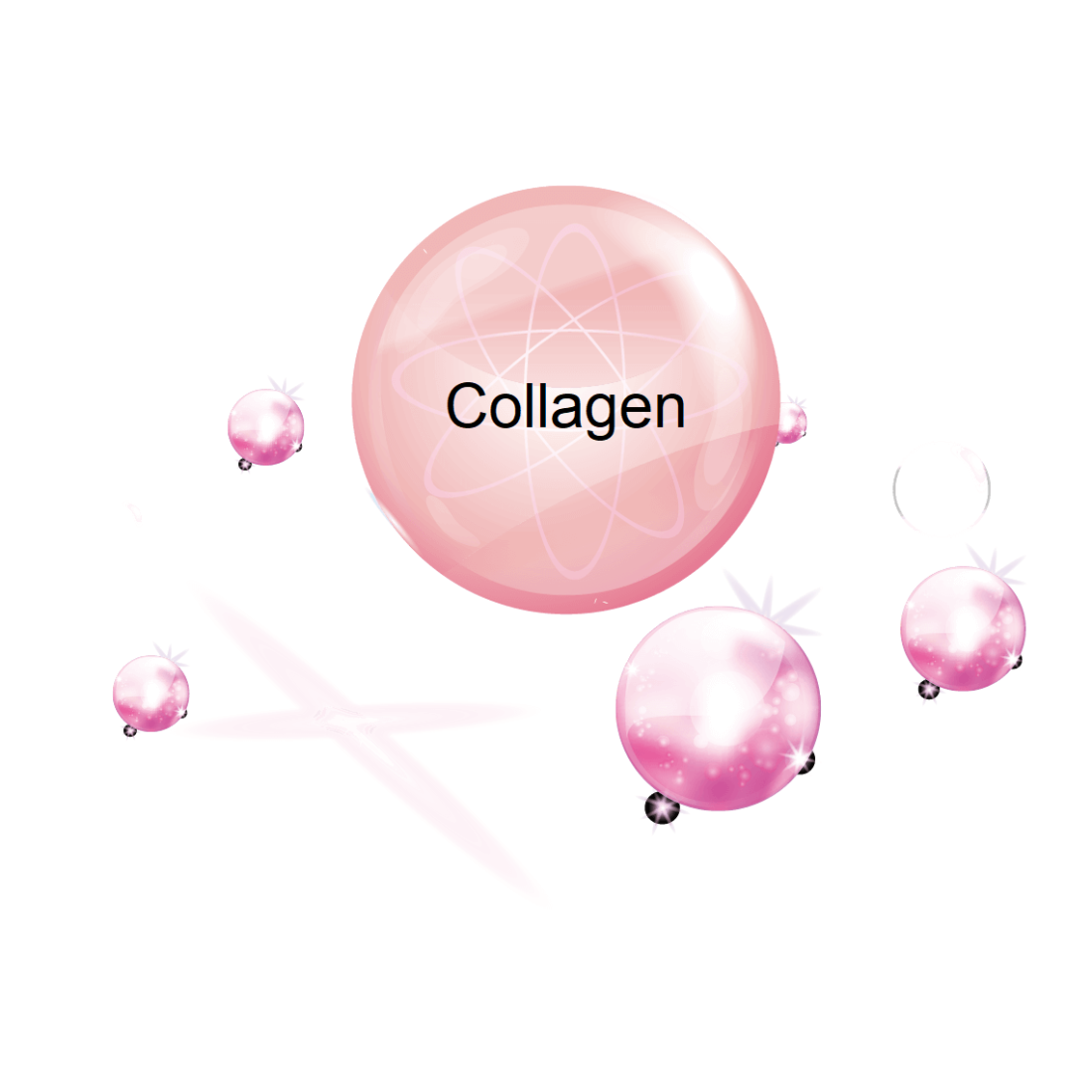
In order to achieve the desired result, 3 to 5 treatments on average, are required. Intervals of 4 weeks between each treatment are also required.
The improvement of the skin will slowly become noticeable after each treatment in the months to come. After 6 months, the result stabilizes.
For white stretch marks, surgery is really the only option with proven results. As the most expensive choice, it may not be practical though. Depending on where the marks are on your body, surgery will remove stretch marks. The most common removal operations include a) abdominoplasty (tummy tuck) and b) body contouring which is a range of procedures and surgeries intended to improve the appearance of a person’s overall appearance.
How Can I Prevent Stretch Marks From Forming?
Exercise
Exercising or doing physical activity on a regular basis is very good for the prevention of stretch marks. The firmer your muscles, the stronger and tighter your skin is. Exercise also helps with maintaining your weight.
Keep your skin well hydrated
Keep your skin hydrated by drinking lots of water. Eight glasses of water are the recommended daily water intake.
To avoid stretch marks during pregnancy, you can start massaging your skin twice daily with an anti-stretch mark oil from the 3rd month of pregnancy.
Pay special attention to your belly, hips, breasts, thighs, and bum when applying the cream/oil. Better results are achieved when the skin is still moist from taking a shower or bath.
Be sure to thoroughly massage the moisturizing agent into your skin as the main aim is to keep your skin hydrated at all times.
Get more Vitamin D
You naturally get Vitamin D from the sun. Over-exposure, however, can lead to skin cancer or aging skin.
Fortified foods (called fortified when nutrients such as Vitamins A & D are added to some food items). The additions are supposed to add health benefits and improve nutrition. Examples of foods that are fortified include breakfast cereals and some milk products such as low-fat milk powders.
Watch your weight
As mentioned earlier, the rapid increase in weight is a major cause of stretch marks developing.
The best way to manage your weight is to follow a healthy well-balanced nutritional diet.
Foods that contain Vitamins C, D & E, zinc (nuts and fish are rich in zinc) and protein promotes skin health and should be included in your diet.
Add Vitamin C to your diet
Vitamin C is a vital nutrient in the production of collagen. Collagen is responsible for making your skin strong and elastic, thus making it less prone to stretch marks.
Make sure to add fruit and vegetables with vitamin C to your diet. Vitamin C is found in citrus fruits (oranges, lemons, grapefruit, guavas, and kiwi).
Vegetables with vitamin C include but are not limited to Brussel sprouts, broccoli, cauliflower, and capsicums.
When Should I Be Worried About Stretch Marks?
Stretch marks are considered a cosmetic problem; not something detrimental to a person’s health.
There are times, however, when stretch marks cover such big areas of the body that they become a concern. The person afflicted may then decide to seek medical advice.
First consulting your GP or a dermatologist is a good place to start.
A physical examination of the skin will enable a diagnosis. All marks on the body are evaluated. This is to ensure they’re all due to the most common causes of stretch marks. Any marks found to differ in appearance from normal stretch marks are evaluated to ascertain if there may be an underlying medical condition that caused it.
There are uncommon conditions that may cause marks resembling stretch marks. Linear focal elastosis (aka elastotic striae) is the result of an increment in the elastic tissue in the skin. Anetoderma (aka macular atrophy) is caused when the loss of elastic tissue in the dermis results in a depression in the skin.
Some pregnant women develop an itchy rash in the stretch marks of their stomach in their third trimester. This rash is known as PUPPP (pruritic urticarial papules and plaques of pregnancy). Not to be confused with psoriasis though. The picture below is courtesy of cancertherapyadvisor.
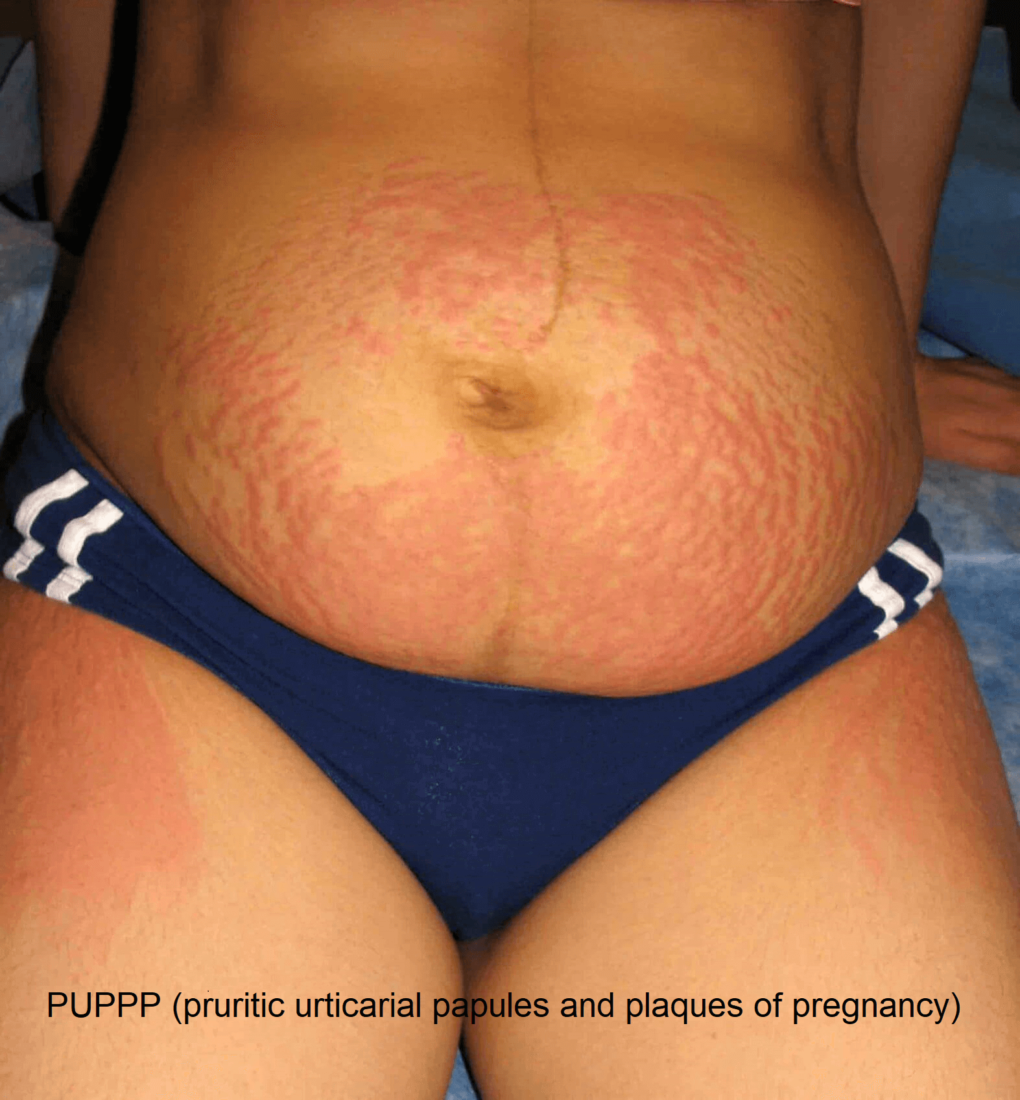
Syndromes your doctor may also check for include Cushing’s, Marfan, and Ehlers-Danlos Syndrome (EDS).
Looking into your medical history may also provide the doctor with more information that can help with the diagnosis.
When doctors suspect the widespread stretch marks are caused by a serious medical condition they may request some tests to be performed such as a skin biopsy, urine, or blood test.
Once the necessary tests ordered by the doctor are performed, the results will enable a definite diagnosis.
Based on this, appropriate treatment options will be discussed with the patient.
Conclusion:
Different opinions on the success of laser treatment for stretch marks attest to the fact that this treatment does not yield positive results for all.
Some argue that the treatment essentially reduces the appearance of stretch marks to such an extent that they are not visible at all. Others say laser treatment works so well, it will appear as if there never were any stretch marks. Then there are those who argue that there is no scientific study that supports the effectiveness of the therapy.
Be that as it may, every individual needs to investigate their specific situation; so enabling an informed decision. The final decision will most probably depend on the cost, as a few sessions may be necessary. Also, as discussed before, white stretch marks may need plastic surgery, rather than laser treatment.
Consultation with either a person skilled in dermatology or any other medical expert in this field can go a long way in getting good advice or guidance on the most appropriate method. Your best option just may not be Fraxel laser for stretch marks removal.
